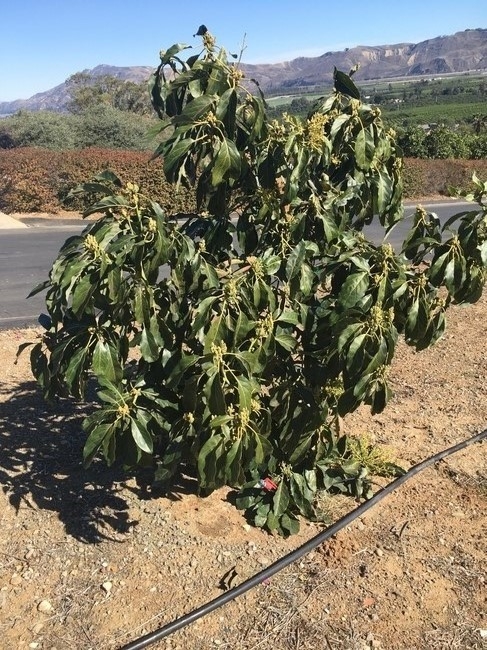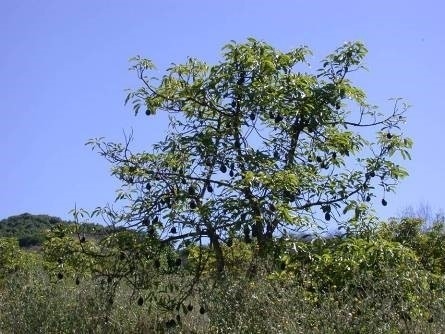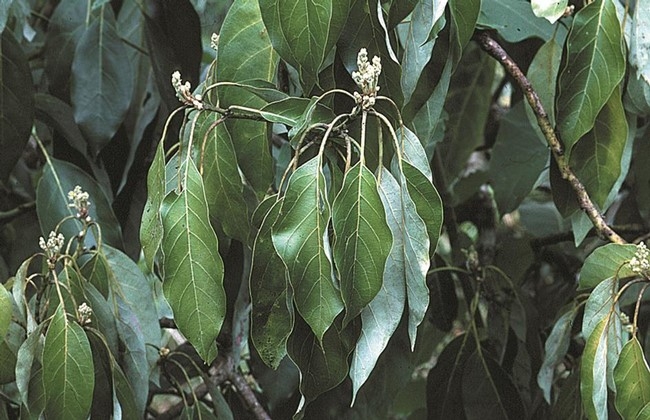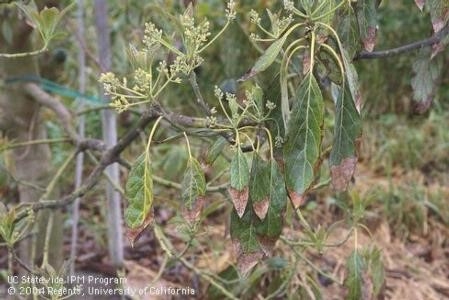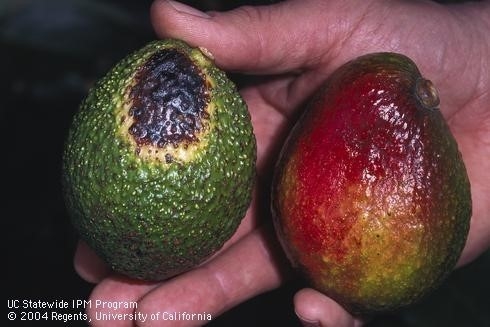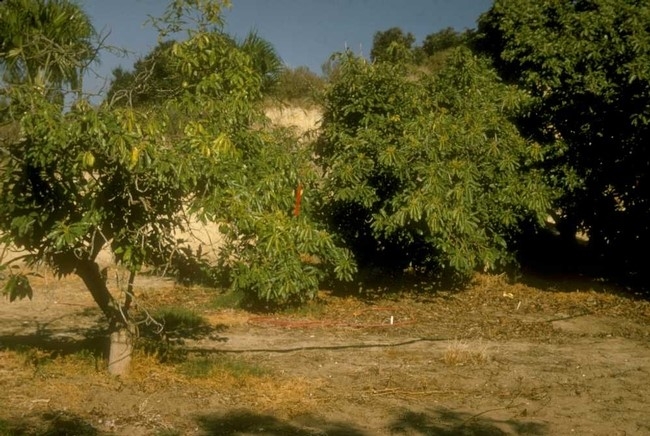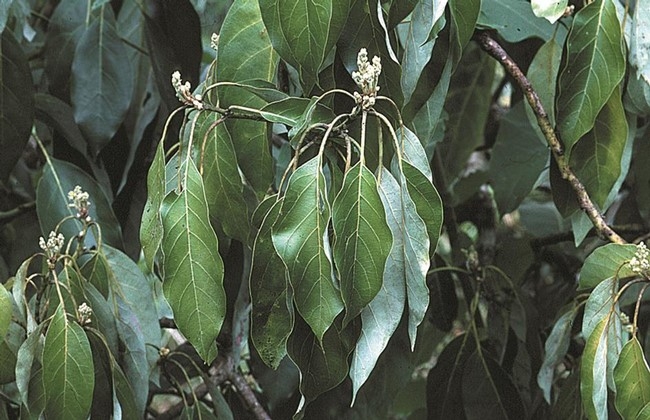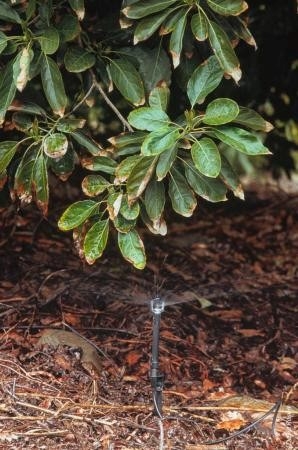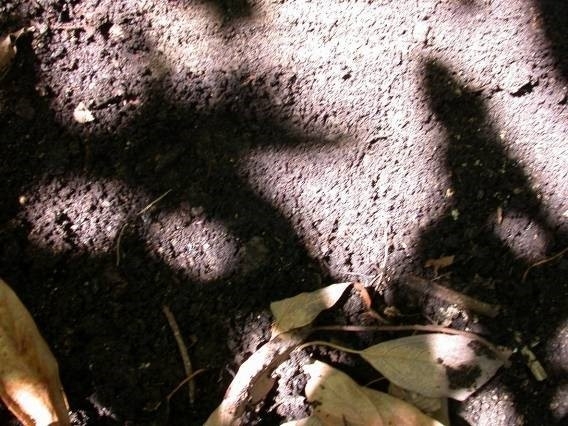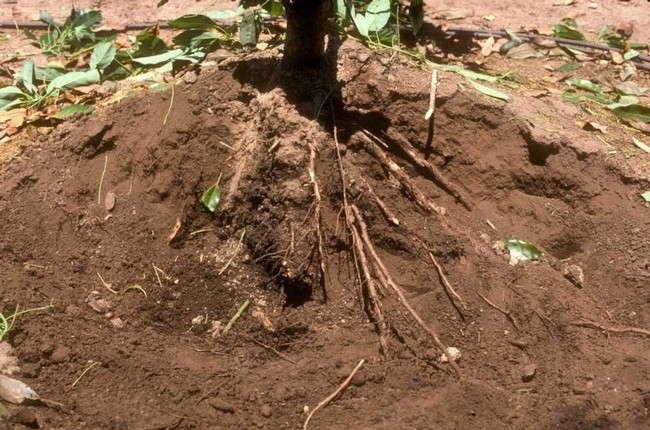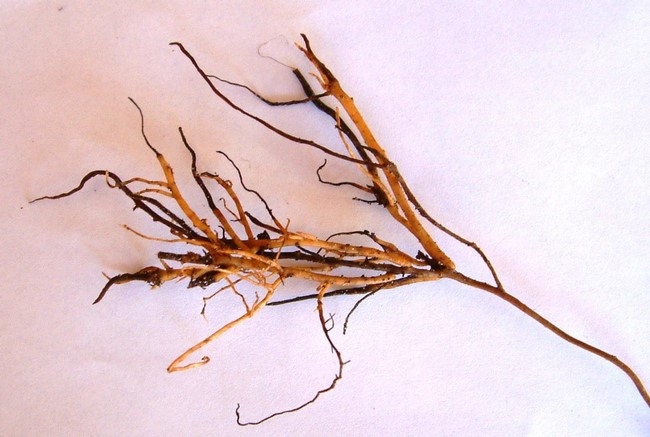We recently had a series of workshops on Avocado Root Rot and ways to manage it. A common question was how to figure out whether the tree was diseased with Phytophthora cinnamomi or just stressed from lack of water. Drought is also compounded and confused by salt accumulation, which is a reflection of how water is being managed. It might be the right amount, but not timed correctly. Too much at one time means the water goes beyond the shallow root system, too little at an irrigation and the salts contained in the water start being taken up by the roots. These “extra” salts need to be leached; otherwise, they actually compete with the tree for soil water. By “extra”, these are the salts like sodium and chloride that can be harmful to the tree, rather than the nutrient salts that are necessary for tree growth, but will also be leached when trying to achieve a balance by removing the harmful salts.
So there are several steps to follow to figure out a droughted tree from a root rotted tree. If the tree is stressed from drought, eventually though, it quite likely can lead to root rot. Looking at wilted leaves is an indication of a stressed root system which is common with a lack of water, but can happen when the roots are soaked for too long from rain, a leaky irrigation system or sediment accumulation that can occur with flooding. Wilting is also one of the first symptoms of root rot, because there are not sufficient roots to keep up with the tree's water demand.
Step I. Wilting
Wilting is going to be the first step in alerting you to a soil/root/water problem, but it is just the first alert and there are more steps to a field diagnosis. The steps take on three different parts of the tree:
First, look at the canopy overall and then more closely in the canopy
Then, look AT the ground
Then, look IN the ground
If you look at the tree from a distance and the canopy is thinning with dieback (staghorning)
Step 2: Thinning canopy.
This means that it is something that has been going on for a longer time that just to cause the leaves to flag (wilt)
And when you look more closely, the leaves are small, yellow, have tip burn and there are lots of flowers
Steps 3, 4, 5: Small, yellow leaves; tip burn; profuse flowering
This again means that it's something that just didn't happen with a missed irrigation or two, or a stopped up emitter. Something has been going on for maybe more than a season.
And if there is fruit, if it is sunburned which means it probably isn't saleable, it means there isn't enough canopy to protect income
Step 6: Small, sunburned fruit
Now you definitely know there is a problem with the roots. The roots mirror the canopy. When they go wrong, they canopy goes wrong. All these thinning symptoms in the canopy, also means the root system is thinning. Also, when the canopy goes wrong, the roots have problems. When the canopy can't feed the root system it is less able to fend off disease, if that is the cause of the thinning canopy problem. At this point, it's not definitive that it is root rot causing the problem, but a sad canopy can lead eventually to a root rot problem because of lack of energy generated in the canopy.
The next step is to look AT the ground surface and see if there's natural leaf mulch. If the tree lacks energy to produce leaves, there won't be any leaf drop and now leaf accumulation. These should be leaves in various stages of brown, indicating they have been there for a while. This mulch protects the roots from drying out and also produces an environment hostile to the root rot organism. No leaves to feed the fungi and bacteria that compete and destroy Phytophthora, eventually Phytophthora will come to dominate the system. No energy to produce leaves; no canopy to protect leaf mulch from wind? And, then the wind blows the leaves away. On hillsides, gravity can act against mulch creation and also exposes trees to more wind, but a healthy tree can create its own mulch in harsh hillside environments.
Step 7: No natural leaf mulch
With a sick canopy and no natural leaf mulch, this is the time to think there is something seriously wrong. There is something wrong with the water uptake in this tree. Either a lack of water or a lack of roots. Is it the timing, amount or distribution of the water? These are all issues that can be corrected if there is sufficient water to do so. Maybe the soil is too wet? It could be asphyxiation. Lack of air. That can be corrected by identifying the cause of the lack of air or too much water.
Step 8: Asphyxiation
But if the soil is not too wet, when you apply water, does the tree perk up? Give it a couple of days. This could always have been the problem. Does the water come on? Is a valve shut down? Is the system not working? Is there poor water distribution. This infrastructure problem is common in hillsides irrigation with cheap parts that are easily damaged by coyotes, rabbits, and pickers.
Step 9: Turn on the water
But if the tree does not or has not responded to applied water, then start digging. It's time to look IN the ground. This is something that should be done on a regular basis just to see how those roots are doing, anyway.
And when you start digging, there's no roots
Step 10: NO roots
Or only big roots
Step 11: Only big roots
And, if you do find any little roots, they are blackened and brittle
Step 12: dead root tips
And you have applied water and the tree doesn't perk up, then the tree probably has Avocado Root Rot disease caused by Phytophthora cinnamomi.
There can be other reasons, for a tree collapse like this, like a gas pipe leak, gopher activity in young trees, a chemical/fertilizer spill. Probably other things that kill roots, but a field diagnosis like this process can pretty much identify the problem as root rot. It can then be verified by a lab test to make sure. However, there are times of the year and disease conditions when a test will come back negative and it might be necessary to retest with another sample at another time of year.
Most groves that have been in the ground for many years and have been harvested by outside commercial crews quite likely have the root rot organism present in the orchard. The lack of disease is because the stress that brings on disease is lacking – water management, frost/heat damage, flooding, too much rain, too much fruit, pruning, etc. – anything that predisposes the tree to infection. It is when several stresses are present that the trees start declining and if identified soon enough can be corrected and the decline stopped and reversed.
